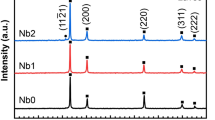Abstract
Corrosion is a phenomenon that directly related to the environment. The surface protection by potential inhibitors is one of the possible solutions to combat metal/or metallic alloy corrosion. Here, we are reporting two 1,2,4-triazole-5-thione derivatives – 4-amino-3-(N-phthallimidomethyl)-1,2,4-triazole-5-thione (Tz-1) and 3-(N-phthalimidomethyl)-4-(4-pyridine)amino-1,2,4-triazole-5-thione (Tz-2) for corrosion inhibition performance on mild steel (MS) surface in 1 M HCl. Electrochemical experiments were carried for potentiodynamic polarization (PDP) and impedance spectroscopic (EIS) measurements of corroded MS surface before and after the addition of compound’s concentrations. Variations in the PDP responses and in the relevant parameters after compound’s addition confirmed that both Tz-1 and Tz-2 are mixed-type inhibitors. An increase in the diameter of a capacitive loop with inhibitor’s concentration in EIS studies revealed the formation of an adsorbed layer on the MS surface; hence protecting corrosion reaction by controlling the charge transfer process. The data obtained from PDP and EIS were reasonably in good agreement. The IE% (inhibition efficiency) of both Tz compounds showed increasing trend as inhibitor’s concentration was increased and the values were evaluated up to 95% and 94%, respectively, at their optimal concentration of 2.5 × 10−4 M. Adsorption studies using the Langmuir model further confirmed the involvement of physisorption process on MS in the presence of both compounds. Theoretical DFT (density functional theory) analysis results were supportive to comparatively more inhibitory efficiency of Tz-1. SEM (scanning electron microscopic) studies indicated more resistive behavior of MS surface for corrosion in the presence of Tz-1.






Similar content being viewed by others
REFERENCES
Javaherdashti, R., Anti-Corros. Methods Mater., 2000, vol. 47, pp. 30–34.
Tavakkolizadeh, M. and Saadatmanesh, H., J. Compos. Constr., 2001, vol. 5, pp. 5200–5210.
Schmitt, G., Global Needs for Knowledge Dissemination, Research, and Development in Materials Deterioration and Corrosion Control, New York: World Corrosion Organization, 2009.
Dwivedi, D., Lepková, K., and Becker, T., RSC Adv., 2017, vol. 7, pp. 4580–4610.
Lgaz, H., Salghi, R., Bhat, K.S., Chaouiki, A., and Shubhalaxmi, S.J., J. Mol. Liq., 2017, vol. 244, pp. 154–168.
Abdul Rahiman, A.F.S. and Sethumanickam, S., Arabian J. Chem., 2017, vol. 10, pp. S3358–S3366.
Camila, G.D. and Alexandre, F.G., INTECH, 2014, vol. 16, pp. 365–379. Dariva, C.G. and Galio, A.F., in Developments in Corrosion Protection, Aliofkhazraei, M., Ed., InTech, 2014, chap. 16, pp. 365–379.
Esmaeili, N., Neshati, J., and Yavari, I., J. Ind. Eng. Chem., 2015, vol. 22, pp. 159–163.
Noor, E.A., Al-Moubaraki, A.H., and Ghamidi, A.A., Arabian J. Sci. Eng., 2019, vol. 44, pp. 237–250.
Singh, A., Singh, V.K., and Quraishi, M.A., Arabian J. Sci. Eng., 2013, vol. 38, pp. 85–97.
Altaf, F., Qureshi, R., Yaqub, A., and Ahmed, S., Chem. Pap., 2019, vol. 73, pp. 1221–1235.
Arshad, N., Akram, A.R., Akram, M., and Rasheed, I., Prot. Met. Phys. Chem. Surf., 2017, vol. 53, no. 2, pp. 343–358.
Arshad, N., Altaf, F., Akram, M., Ullah, M., Prot. Met. Phys. Chem. Surf., 2019, vol. 55, no. 4, pp. 770–780.
Daoud, D., Douadi, T., Hamani, H., Chafaa, S., and Al-Noaima, M., Corros. Sci., 2015, vol. 94, pp. 21–37.
Singh, A., Ansari, K.R., Haque, J., Dohare, P., Lgaz, H., Salghi, R., and Quraishi, M., J. Taiwan Inst. Chem. Eng., 2018, vol. 82, pp. 233–251.
Phadke, N.S., Vijaya, D.P.A., and Seranthimata, S., J. Bio-Tribo-Corros., 2017, vol. 3, p. 42.
Qi, M., Qi, S., He, X., Tang, Y., and Lu, G., Corros. Sci., 2017, vol. 129, pp. 91–101.
Yunus, U., Bhatti, M.H., Rahman, N., et al., J. Chem., 2013, vol. 2013, pp. 1–8.
Desai, P.S. and Indorwala, N.S., Int. J. Curr. Microbiol. Appl. Sci., 2015, vol. 4, pp. 928–938.
Hosseini, M., Mertens, S.F.L., and Arshadi, M.R., Corros. Sci., 2003, vol. 45, pp. 1473–1489.
Quraishi, M.A., Ambrish, S., Kumar, S.V., Kumar, D., and Singh, A.K., Mater. Chem. Phys., 2010, vol. 122, pp. 114–122.
Altaf, F., Qureshi, R., and Ahmed, S., J. Electroanal. Chem., 2011, vol. 659, no. 2, pp. 134–142.
Kumar, M.S., Kumar, S.L.A., and Sreekanth, A., Ind. Eng. Chem. Res., 2012, vol. 51, pp. 5408–5418.
Haddou, B.A., Chebabe, D., Dermaj, A., Benassaoui, H., El-Assyry, A., Hajjaji, N., Ahmed, S., and Srhiri, A., J. Mater. Environ. Sci., 2016, vol. 7, pp. 2191–2200.
Haddou, B.A., Chebabe, D., Dermaj, A., Benassaoui, H., El-Assyry, A., Hajjaji, N., Ahmed, S., and Srhiri, A., J. Mater. Environ. Sci., 2017, vol. 8, pp. 3943–2952.
Lebrini, M., Traisnel, M., and Lagrenee, M., Corros. Sci., 2008, vol. 50, pp. 473–479.
Banerjee, G. and Malhotra, S.N., Corrosion, 1992, vol. 48, pp. 10–15.
Deng, S. and Li, X., Corros. Sci., 2012, vol. 64, pp. 253–262.
Farsak, M., Kelesand, H., and Keles, M., Corros. Sci., 2015, vol. 98, pp. 223–232.
Karthik, G., Sundaravadivelu, M., and Rajkumar, P., Res. Chem. Intermed., 2015, vol. 41, pp. 1543–1558.
Obayes, H.R., Al-Amiery, A.A., Alwan, G.H., et al., J. Mol. Struct., 2017, vol. 1138, pp. 27–34.
ACKNOWLEDGMENTS
We are thankful to Dr. Uzma Yunus (Department of Chemistry, Allama Iqbal Open University) for providing the compounds synthesized in her laboratory and reported somewhere else.
Author information
Authors and Affiliations
Corresponding author
Ethics declarations
The authors declare that they have no conflicts of interest.
Rights and permissions
About this article
Cite this article
Arshad, N., Akram, M., Altaf, F. et al. Anti-Corrosive Potentials of 1,2,4-Triazole-5-thiones For Mild Steel 1030 in Acidic Environment. Prot Met Phys Chem Surf 56, 816–825 (2020). https://doi.org/10.1134/S207020512004005X
Received:
Revised:
Accepted:
Published:
Issue Date:
DOI: https://doi.org/10.1134/S207020512004005X




